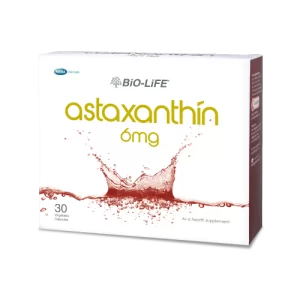
Astaxanthin: One of the world’s best nutrient for skin health
May 7, 2021
The King of antioxidant

People usually apply sunscreen onto the skin to protect skin from harmful UV light. But this is insufficient, as chances for UVA and UVB to penetrate the skin to cause premature aging still exist, especially when living in a country with a plentiful of sunshine all year round. For instance, in Malaysia there is no way for us to escape from sunlight exposure. It was found that women living in Bangkok has the most severe degree of wrinkles than women living in Shanghai and Tokyo. 1 This is possibly due to increased exposure to UV light as it is the major cause of skin aging and UV strength is strongest at the equator. 2
Astaxanthin, derived from a microalga, often called “The King of antioxidant”, is considered as one of the world strongest antioxidant. Its antioxidant strength is 6000 times stronger than vitamin C,3 and it has been shown to protect skin aging in all layers.
Clinical studies have shown that intake of astaxanthin can improve fine lines/wrinkles, moisture content, roughness and elasticity of the skin within 6 to 8 weeks.4,5 Thus, astaxanthin is a must to be included as a part of your preventive measure for skin aging, especially for people with high exposure to UV light due to occupation requirement or those that enjoy outdoor activities.

Find out more about BiO-LiFE Astaxanthin 6mg
References:
- Tsukahara, K., et.al., 2007. Comparison of age-related changes in facial wrinkles and sagging in the skin of Japanese, Chinese and Thai women. J Dermatol Sci., 47(1):19-28.
- Amaro-Ortiz, A., Yan, B, D’Orazio, J.A., 2014. Ultraviolet Radiation, Aging and the Skin: Prevention of Damage by Topical cAMP Manipulation. Molecules, 19(5): 6202–6219
- Chida, M., et.al., 1999. In vitro testing of antioxidants and biochemical end-points in bovine retinal tissue. Ophthalmic Res, 31: 407-415
- Yamashita, E. (2005). The effects of a dietary supplement containing astaxanthin on skin condition. Food Style 21, 9(9), 72.
- Tominaga, K. et.al. 2012. Cosmetic benefits of astaxanthin on humans subjects. ACTA Biochimica Polonica 59:43-47.



